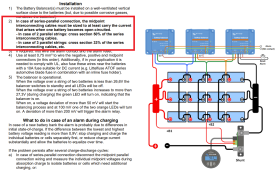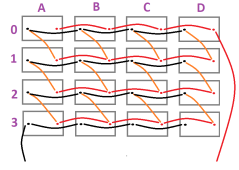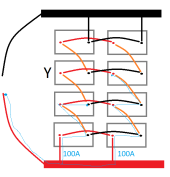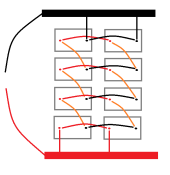m0onspell
New Member
- Joined
- Oct 18, 2022
- Messages
- 139
In one of Victron's manuals it shows how to use battery balancer with series-parallel battery bank:

It says:
Is there any visualization/explanation for that kind of fault available?

It says:
I don't think I understand how to calculate that current. I tried to google but found nothing.In case of series-parallel connection, the midpoint interconnecting cables must be sized to at least carry the current that arises when one battery becomes open-circuited. - In case of 2 parallel strings: cross section 50% of the series interconnecting cables. - In case of 3 parallel strings: cross section 33% of the series interconnecting cables, etc.
Is there any visualization/explanation for that kind of fault available?








